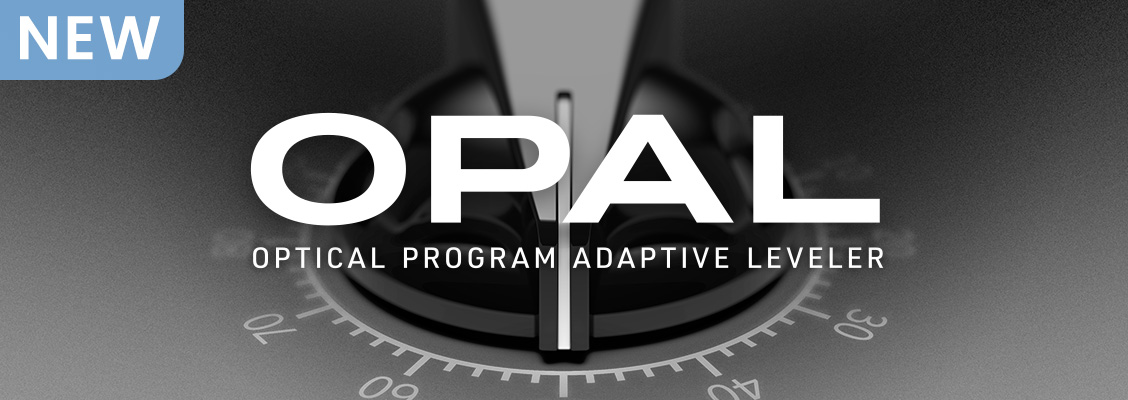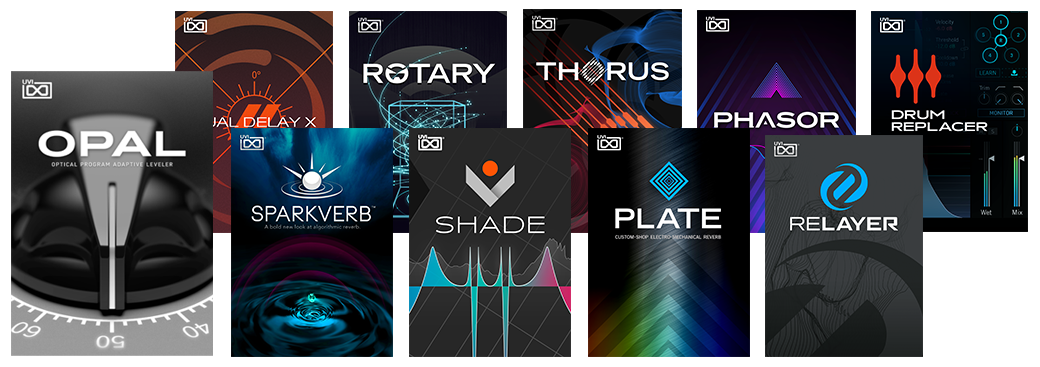

UVI has a long history of research and development in effects plugins. For over 10 years, our development team has worked to offer the most accessible products at the cutting-edge of audio processing. Let's take a look at how our team has designed three of the most iconic effects of our collection: Opal, Drum Replacer, and Plate.
Opal is our brand-new optical program-adaptive leveler, designed to emulate a beloved vintage optical compressor from the ‘60s. We spent more than a year on research and development to create an emulation based on a physical model of the original circuit design. Opal reproduces the inherent program-dependent response times and nonlinearities which contribute to this famous compressor’s sonic signature.

For the simulation itself, we applied some reduction and pre-resolution techniques, and were able to reduce the model to 2 x 4th order systems (out of 40 components to begin with). The solver was also specially designed to be computationally efficient. Finally, we added modern features including external sidechain, variable responsiveness, frequency response correction, and tube drive, to create our own innovative physical model.
For Drum Replacer, we wanted to create a drum replacement tool, simple on the surface and easy to use, keeping the well established metaphor of level-based trigger detection. But under the hood, we spent time on a number of advanced signal cleaning and pre-processing methods, such as source separation and machine-learning methods to simplify the detection task.
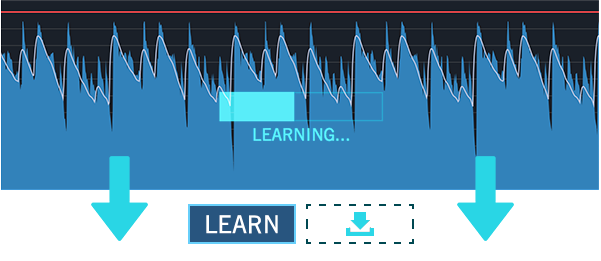

Since signal is additively resynthesized in a constructivist manner, background bleed elements (e.g. hi-hats on a kick drum track) or noise can be efficiently removed. Combining these tools, borrowed from academia, provides a way to address difficult use cases by making the most of the available information about the problem at hand.
One of our main goals for Plate, was to have a fully parametric plate reverb to be used creatively, by letting people design their own custom plate reverb way beyond what's possible in reality. Plate employs realtime physical-modeling with up to 20,000 modes to achieve new levels of depth and detail, going well beyond the limitation of physical units.
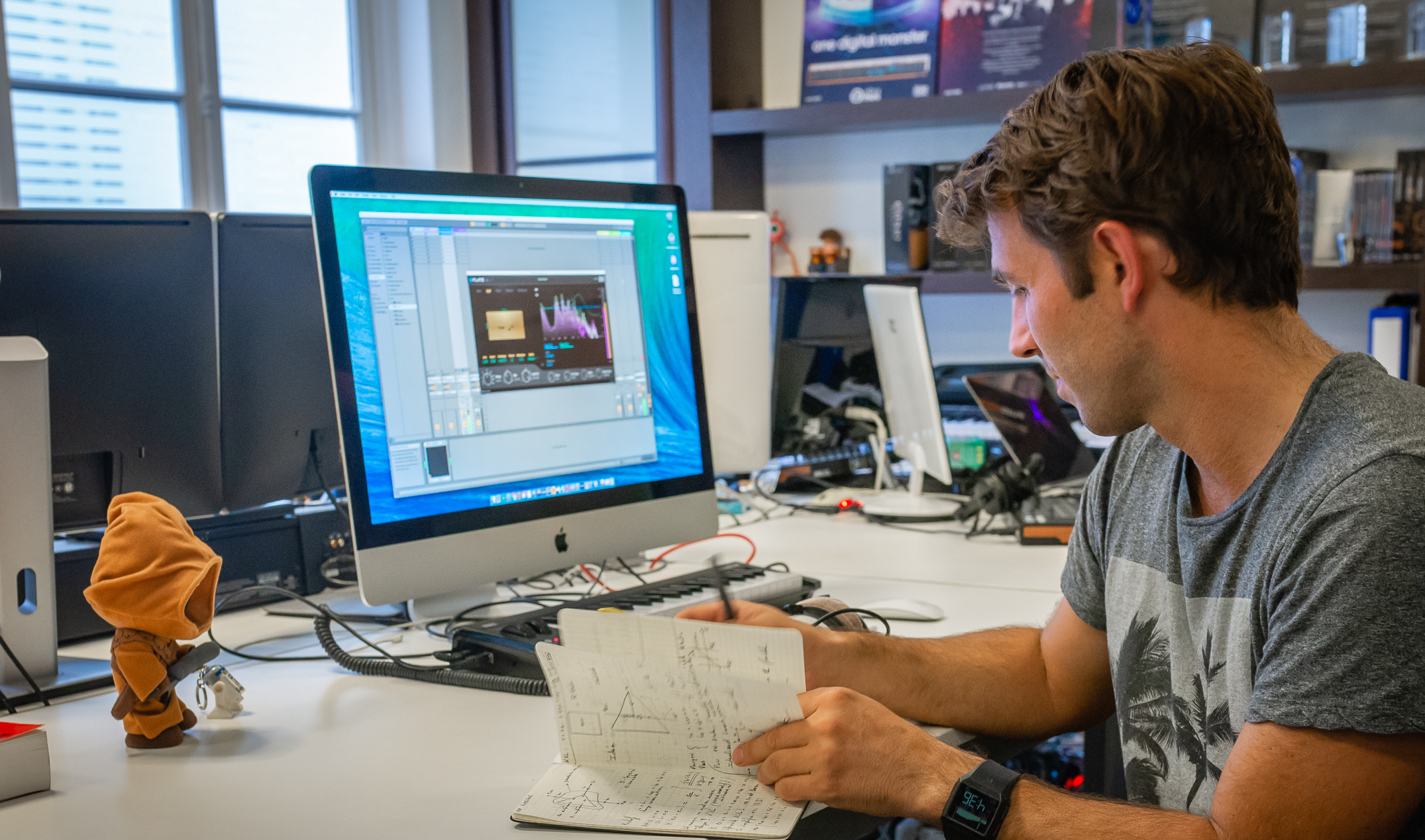
The most iconic plate reverb, the EMT140, is a heavy device made of a large sheet of steel measuring 2m x 1m, with fixed transducers attached to the metal, and foam to control the amount of damping.
• Physical dimensions for example a thin and long plate will sound similar to a spring reverb with very dispersive wave propagation of pulses like in railway
• Material, to change propagation speed and inharmonicity
• Tension, to control modal frequencies tuning
• Transducer placement, to change the reverb timbre
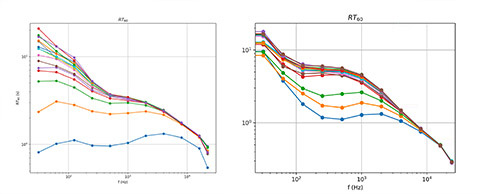
All kinds of damping are based on academic research and physically grounded, but we also made sure that one can play, extrapolate, and mix them intuitively in an easy-to-use interface with just a few clicks.
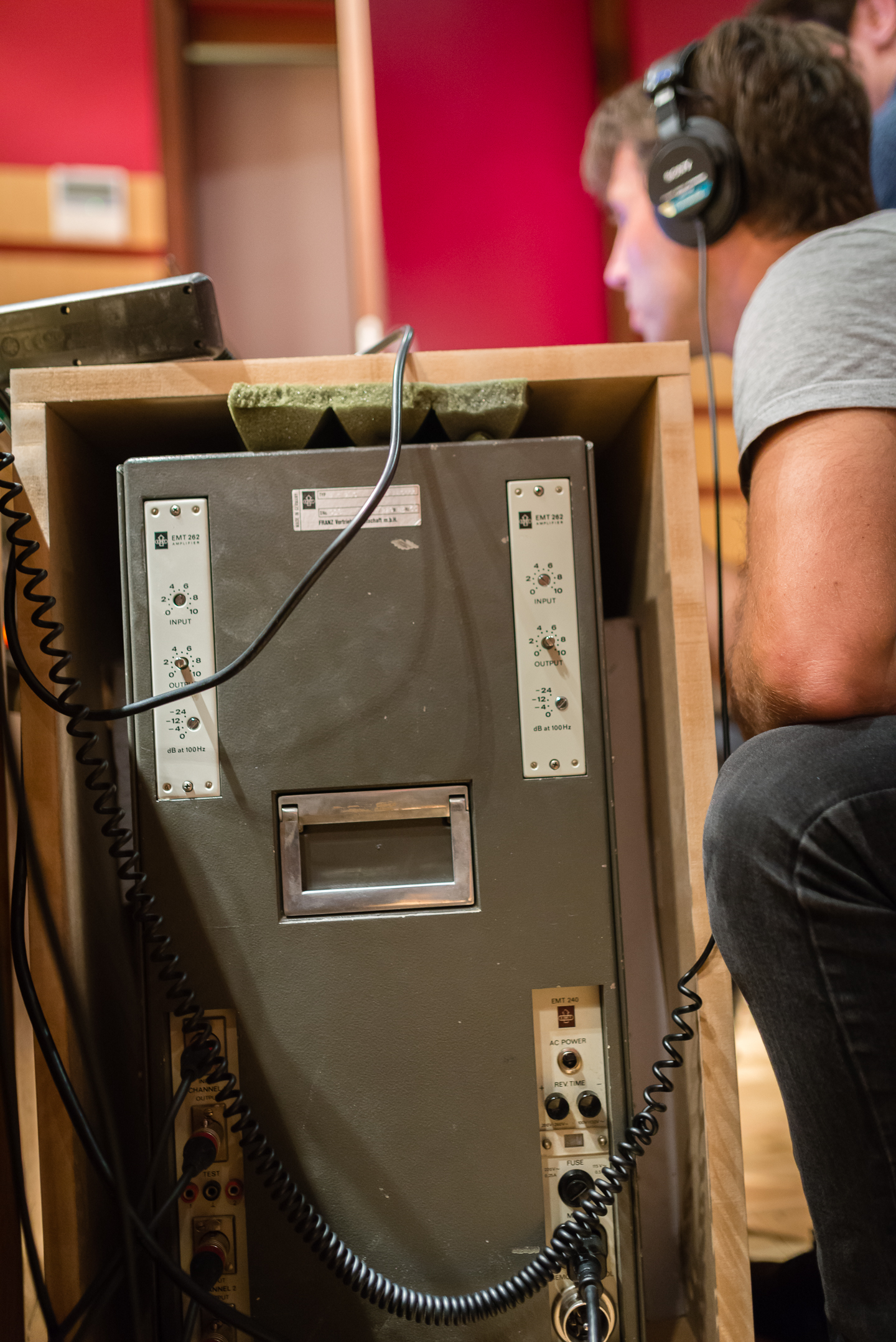
We even included some out-of-this-world features, like mode modulation in order to bring the lush chorused tails of algorithmic reverbs into the world of physical modeling.
We wanted Plate to be an authentic and accurate emulation. For that purpose, we went to a famous studio in Paris to perform in depth measurements on the well known EMT140 (steel) and EMT240 (gold foil). We then spent time calibrating the physical model to closely match our measurements for all kinds of settings.
We even included some out-of-this-world features, like mode modulation in order to bring the lush chorused tails of algorithmic reverbs into the world of physical modeling. We wanted Plate to be an authentic and accurate emulation. For that purpose, we went to a famous studio in Paris to perform in depth measurements on the well known EMT140 (steel) and EMT240 (gold foil). We then spent time calibrating the physical model to closely match our measurements for all kinds of settings.
UVI Focus
- UVI Focus - Key Suite's 5 Rare & Unconventional Machines
- UVI Focus - In Conversation with Jean-Claude Chapuis
- UVI Focus - In Conversation With Venus Theory
- UVI Focus - HX-20: Reviving the MS-20 inspiration in 5 timeless tracks
- UVI Focus - In Conversation With Jon Carin
- UVI Focus - 2023 Throwback - A year of inspiration
- UVI Focus - 10 Falcon Power-Features You Should Know
- UVI Focus - Soul Bass & Soul Drums: A Dynamic Duo
- UVI Focus - Synth Anthology 4 - Experiencing Sound Design with MPE
- UVI Focus - The R&D behind UVI effects
- UVI Focus - The story of KAWAI
- UVI Focus - In Conversation With Antoine Martin
- UVI Focus - Advanced Sound Design Techniques with Falcon Expansions
- UVI Focus - Phasor: The Story of a Mythical Effect
- UVI Focus - 5 Key Features of Percussion Factory
- UVI Focus - The story of Vintage Vault 4
- UVI Focus - In conversation with Lou Wiss
- UVI Focus - 7 Hidden Gems of Toy Suite
- UVI Focus - PX Guitar Syn, A Piece of Hybrid-Instrument History
- UVI Focus - In conversation with Jordan Rudess
- UVI Focus - IRCAM & UVI, a successful pair
- UVI Focus - Behind-the-scenes of Soul Drums
- UVI Focus - Deep Dive into Synth Anthology 4's modular rarities
- UVI Focus - Deep dive in Falcon's 'Texture' Oscillator
- UVI Focus - In conversation with Simon Stockhausen
- UVI Focus - Deep dive in World Suite 2's Oriental Ensemble
- UVI Focus - Exploring Key Suite Bundle Edition
- UVI Focus - Behind-the-scenes of Walker 2
- UVI Focus - In action with Dual Delay X
- UVI Focus - In action with Shade
- UVI Focus - In conversation with Guillaume Roussel
- UVI Focus - Behind-the-scenes of Augmented Orchestra
- UVI Focus - Behind-the-scenes of UVI


